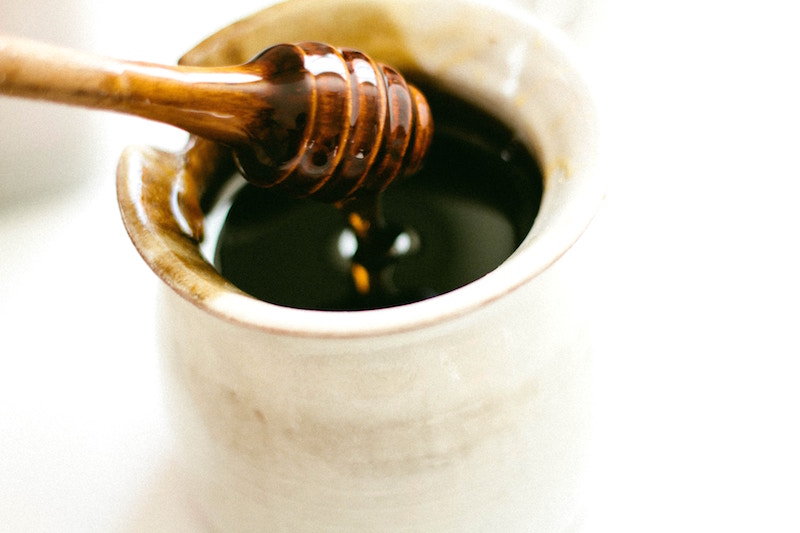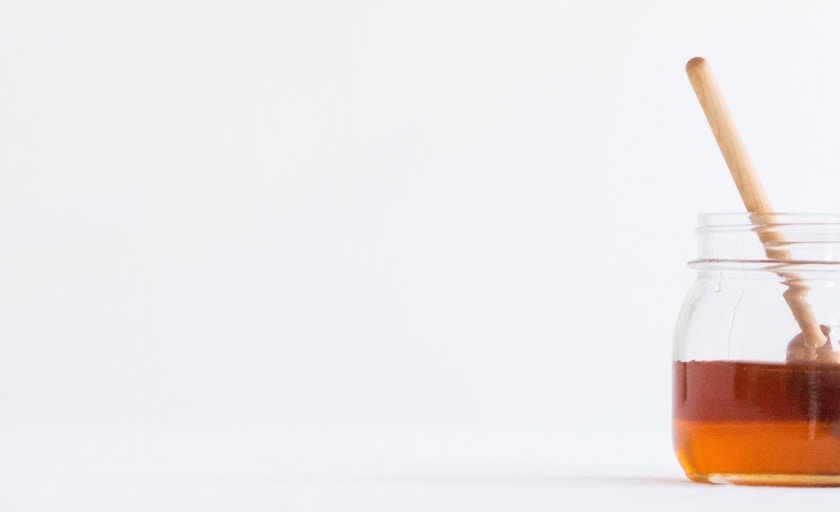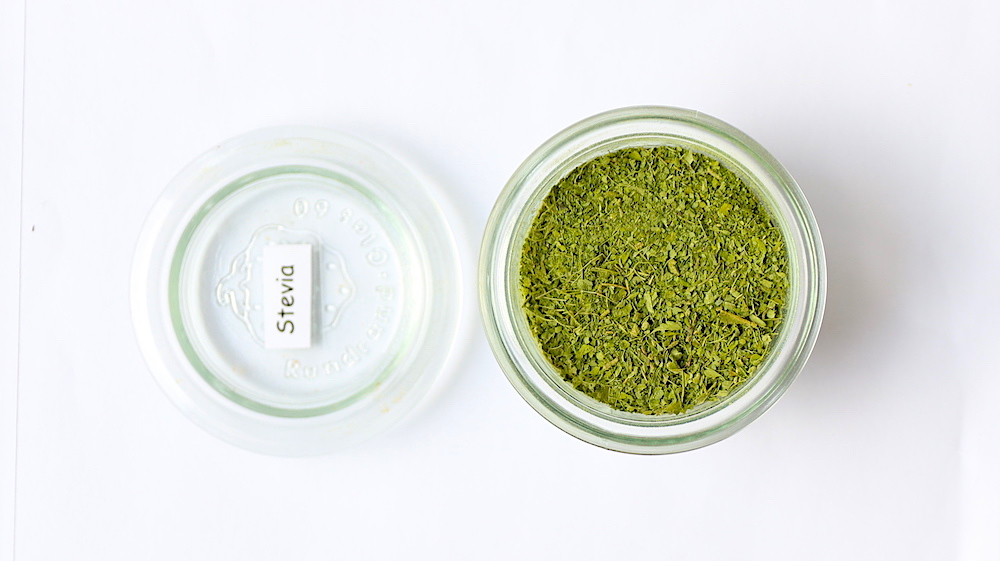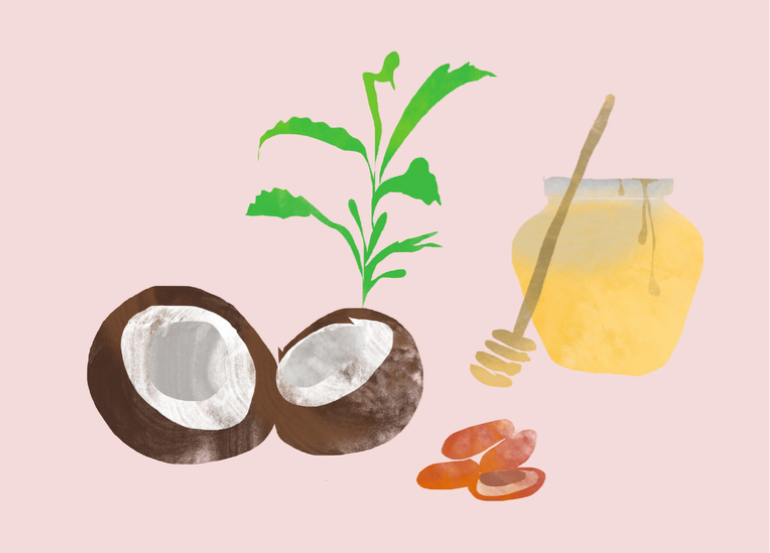How healthy are alternative sweeteners in reality?
Alternative sweeteners have taken the spotlight in the nutrition world, and for good reason. After all, in the last 150 years, the average sugar consumption per capita has risen to 100 g of sugar daily, and thus to an unimaginable amount of 35 kg annually.
Standard household sugar is a product that’s been reduced to a disaccharide, which consists of equal parts glucose (dextrose) and fructose (fruit sugar), meaning it contains 100% carbohydrates.
So are there really healthy alternatives to this kind of sugar, or do we need to start rethinking our taste preferences? “Healthy,” of course, would mean that to consume it would give us certain health benefits. Alternative sweeteners do contain small amounts of minerals, vitamins, and, when raw, enzymes from the original food (compared to white granulated sugar), but at the same time they’re still concentrated carbohydrates that we shouldn’t automatically associate with “healthy.”
Let’s take a closer look at the following:
Alternative sweeteners:
- Agave syrup
- Apple syrup
- Coconut blossom sugar
- Date syrup
- Honey
- Maple syrup
- Rice syrup
- Stevia
- Yacon syrup
- Xylith and Erythritol
Alternative sweeteners in comparison
(in alphabetical order)
Agave syrup
Agave syrup is obtained from agave juice. After extraction, it gets filtered, heated, and thickened, which makes it 76% sugar. The consistency is somewhat thinner than honey and it consists mainly of fructose and glucose, with the fructose content clearly predominating at an average of 7 : 3. This gives agave syrup a glycemic index of 15, the lowest of all sweeteners, and as a result is metabolized almost independently of insulin.
Caution:
It’s important to note that a high fructose content can also have negative effects. Fructose travels through the blood directly to the liver, where it gets converted to fat, if there’s a large amount.
Apple syrup
Apple syrup is also known as apple sweetener. In the production process, apples are pressed into juice and steamed. Apple syrup is a regional sweetener, tastes slightly sour (and a little like apples), and is able to retain minerals and phytonutrients, depending on the manufacturing process and temperature. It’s worth noting that thick juices have a fructose content of about 60%.
Coconut blossom sugar
Coconut blossom sugar is the thickened, crystallized blossom juice of coconut palms, consisting of equal parts glucose and fructose (a ratio of 1:1) as well as a small portion of the soluble fiber inulin. As a result, its consumption causes blood sugar levels to rise at a slower rate than household sugar. It has a slight caramel taste, not quite as sweet as household sugar, and contains, among other things, the minerals iron, magnesium, zinc, and potassium.

Date syrup
Date syrup is made from dried dates. Dates contain slightly more glucose than fructose, and date syrup contains the minerals magnesium, potassium, iron, folic acid, zinc, and calcium, as well as vitamin A.
Date paste can actually be easily prepared, and is compatible with raw food nutrition. It’s metabolized alkaline, making it even better than store-bought date syrup, which loses nutrients when heated.
PREPARATION: Soak 10 or 20 dates in water for at least 2 hours. Then puree with the soaking water and season with cinnamon, vanilla, or cardamom if desired. The amount of water determines the thickness of the paste. Keeps well for a week in the refrigerator, sealed in a screw-top jar.
Honey
Honey (not vegan) consists of glucose and fructose just like sugar, but it also contains the minerals potassium, magnesium, calcium, B vitamins, vitamin C, and additional enzymes. It’s recommended to buy cold-spun honey from a local beekeeper. Honey is said to have anti-inflammatory and wound-healing properties.

Maple syrup
Maple syrup is the boiled down sap of the Canadian maple tree. Approximately one liter of syrup is produced from about 40 liters of sap. It tastes a little bit like caramel, has a ratio of 1 : 1 glucose and fructose, and contains about 67% sugar and small amounts of minerals like potassium, iron, and magnesium. Maple syrup has a glycemic index of 55 – 65, and a slightly lower sweetening quality than household sugar.
Rice syrup
Rice syrup is taken from whole rice grains or rice flour and doesn’t have any fructose in it at all. Instead, it contains a special form of glucose that first needs to be converted by the body, which causes blood sugar levels to rise more slowly than “normal” glucose. Rice syrup also contains some minerals like potassium, iron, and magnesium, and has a little bit of a malty-nutty flavor. It only has half of the sweetening quality that household sugar has.

Stevia
Stevia, also known as sweet herb, is a plant with an intense sweetness and a licorice-like taste. Approximately 20% of its green leaves consist of the sweetening steviol glycosides, which are 300 to 400 times as sweet as sugar. However, heavy processing is required to extract the sweetening substances out of it. Stevia drops or tabs contain no calories and are metabolized without insulin.
Advantage: Consuming raw stevia has no effect on blood sugar levels.
For raw food cooking, we would recommend the fresh stevia plant. It costs 2 or 3 euros and in the garden can grow quickly into a shrub up to 60 cm high. Fresh stevia leaves contain plenty of minerals, phytonutrients, and also vitamin C. They can also be dried and easily powdered in a blender for use in the kitchen. The green powder can be used as a sweetener without affecting blood sugar.
Yacon syrup
Yacon syrup is obtained from the tuber of the yacon plant and has a fruity-caramel sweetness. Due to its special composition of only a small amount of glucose and fructose, but a large amount of soluble fibers like inulin and fructooligosaccharides (FOS), yacon syrup hardly raises blood sugar levels at all..
And in addition to these qualities, it’s also considered to be healthy for digestion. Soluble dietary fiber serves as food for colon bacteria, which gives it a prebiotic effect. That being said, it should also be noted that consumption of yacon syrup can cause flatulence in sensitive people.
Excursus: Sugar substitutes xylitol and erythritol
The sugar substitutes xylitol and erythritol are sugar alcohols. Although they’re made from plant-based raw materials, they are much less like natural foods than the alternative sweeteners we’ve discussed so far.
Xylitol
Originally, xylitol, also known as birch sugar, was obtained from birch wood. Nowadays, it’s mostly produced from corncob pomace, which can involve the use of genetically modified bacteria. It’s definitely safer to use organic products here.
Even though xylitol has almost the same sweetening quality as household sugar, it has 40% fewer calories and hardly raises the body’s blood sugar levels at all..
What’s really interesting about xylitol is its tooth-friendly property. Its effect is based on the fact that cavity-causing bacteria aren’t able to use xylitol, and are thus deprived of their food source (for an alternative to conventional gummy bears, see HERE). As a result, this also minimizes acid and plaque formation.
In larger quantities, xylitol has a flatulent and laxative effect. The laxative effect is explained by the fact that xylitol doesn’t really get absorbed in the small intestine, so most of it ends up in the large intestine. Due to its water-binding property, xylitol can then further lead to diarrhea.
Erythritol
Erythritol is retrieved from glucose by microbial fermentation, and fermented in the presence of yeast cultures. This process may use genetically modified microorganisms, similarly to the production of xylitol.
This sugar alcohol is almost completely calorie-free, and doesn’t create a rise in blood sugar, but it has 70% of the sweetening quality of sugar.
Erythritol is absorbed almost entirely through the small intestine and excreted mostly unaffected in the urine, and is therefore considered to be easier on the intestines than xylitol. But that being said, erythritol can still have effects on the intestinal microbiome. People with a sensitive digestive system in particular should consume this sugar substitute with caution..
Conclusion
So we can say with confidence that all of the sweeteners we’ve presented are valuable and healthier alternatives to refined household sugar. However, we can’t let this statement tempt us into consuming too much of them. Although alternative sweeteners do contain small amounts of health-promoting ingredients, in the end they’re all still concentrated carbohydrates.
But used occasionally, we can use them to sweeten our meals with a clear conscience.
Our top choice would be the homemade paste from dried fruits, like the date paste mentioned earlier. Since it can be prepared raw, it has the greatest enzyme and nutrient richness, and is alkaline metabolized to boot.
Additionally, we recommend finding new taste experiences with fresh fruits and vegetables, combined with plenty of leafy greens and wild herbs, to help initiate a gentle change in taste.
Further suggestions
You are interessted in gaining a comprehensive understanding of the health benefits of a plant-based diet?
Take the opportunity and join our unique, based on nutritional sciences and practice-oriented training program for gaining a high level of health.
We are more than happy to inform you about our training program on our website!




0 Comments